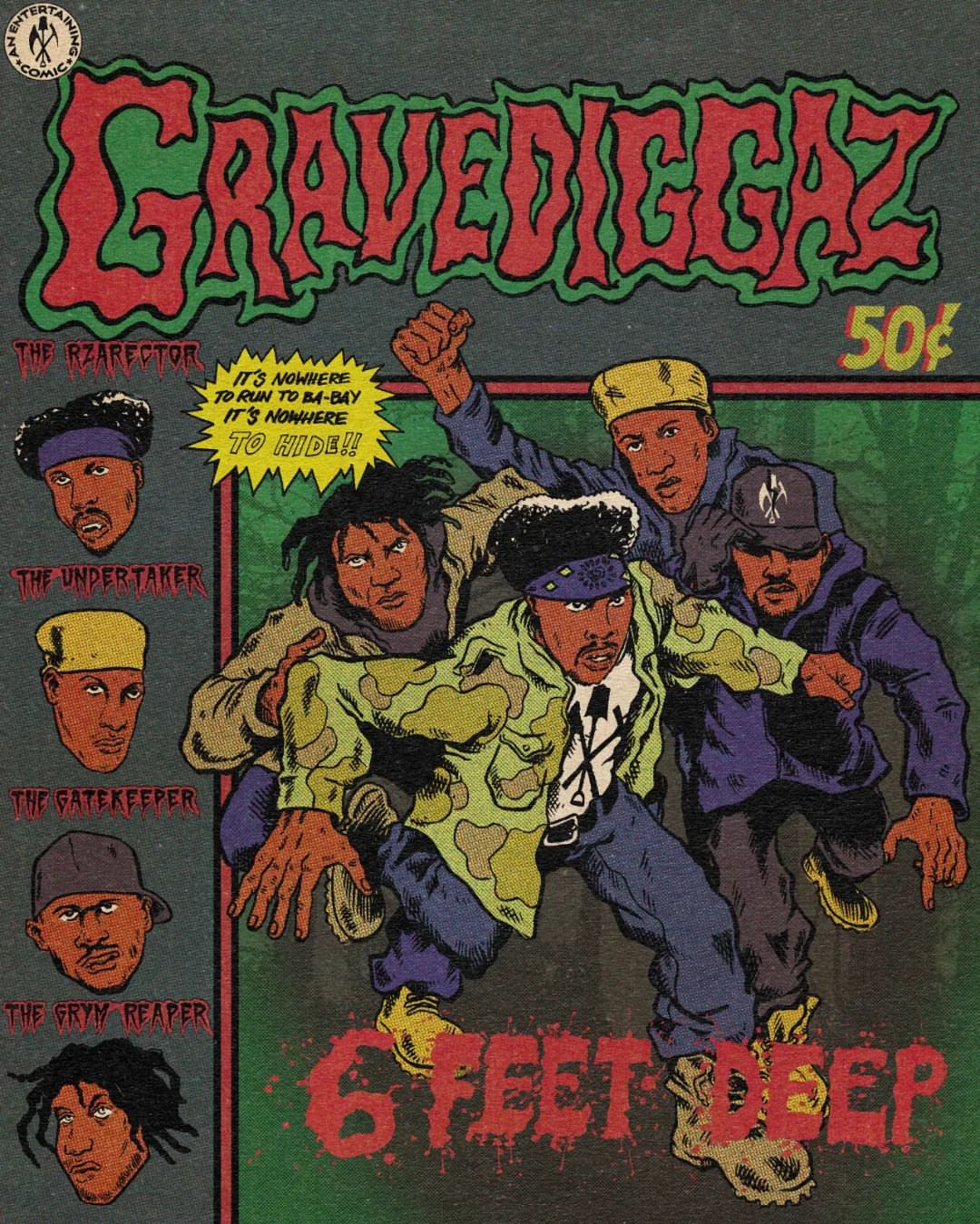The video for "Diary of a Madman" by the rap band the Gravediggaz includes a warning that the clip does not condone Satanism or blasphemy; the video for "Live Evil" by the Flatlinerz depicts members of the hip hop band rapping from the inside of a grave, and the video for "Hellbound" by the Almighty RSO takes the deaths of the band members as a starting point and climaxes when the rapper E. Devious is shown with the mark of the Devil, 666, shaved into his head. With gangsta rap having exhausted nearly every imaginable murder scenario, a new breed of rappers is taking hip-hop beyond the grave. Some call this development horrorcore because it uses horror film as metaphors for ghetto life. Others prefer the term death rap because the genre takes hip-hop to musical and lyrical extremes in the same way that death metal bands like Obituary and Carcass bring rock to a boiling point. To a certain degree, both death metal and death rap try to escape from reality, offering nihilism as a cure-all. But in doing so, both end up commenting on a reality so grim and alienating that the only direction its outcasts turn is toward darkness. The fans of the two genres find comfort in fantasy, in finding a collective myth for their private pain. Unlike heavy metal, rap has had death on its agenda since its inception. The genre's earliest tracks were usually counterbalanced by cautionary tales of drugs and shootings. Rap has also always looked to horror films to conjure a quick image, from the Sugar Hill Gang dropping "Rapper's Delight" to DJ Jazzy Jeff and the Fresh Prince parodying Freddy Krueger in 1988's "Nightmare on My Street." Cont'd below...
A few years ago, rap and death metal began to recognize that they were sitting on opposite sides of the same cell wall. Public Enemy sampled the Satanist band Slayer, Ice-T collaborated with them on the soundtrack for the horror film, "Judgment Night," and Cypress Hill put a Gothic-looking graveyard on the cover of its latest album, "Black Sunday." Not until this year, however, have hip-hop bands been willing to complete their move from the streets to the graveyards. "I'm the resurrector," the Gravediggaz rap on their first album, "6 Feet Deep." "Be my sacrifice. Commit suicide, and I'll bring you back to life." For those who cross the Gravediggaz, a band made up of members of the Wu-Tang Clan, Too Poetic, De La Soul and Stetsasonic, death is only the beginning of their punishment. "First I'll assassinate 'em," they rap on "Diary of a Madman." "And then I cremate 'em, and take all of his... ashes and evaporate 'em." Citing suspense-film directors from Alfred Hitchcock to Wes Craven and displaying an impressive knowledge of anatomy, the Gravediggaz rap about means of dismemberment, rituals of exorcisms and torments of hell. They never credit heavy metal as an influence, but "Diary of a Madman:" is also the title of a 1981 Ozzy Osbourne album and the song "Bang Your Head" borrows its name from the 1984 Quiet Riot metal album. Musically, death rap is developing its own repertory and cliches. The Gravediggaz use creaking doors and howling wolves as rhythm tracks and often rap in a cartoonish, exaggerated style. - New York Times (October, 1994). RZA and Prince Paul were such an amazing combination on 6 Feet Deep!




